Visiting My Son Sanctuary, visitors are not only mesmerized by the ancient moss-covered temple towers but also immersed in the distinctive Cham art performances — where sound, light, and motion blend into a vivid cultural symphony.

Visiting My Son Sanctuary, visitors are not only mesmerized by the ancient moss-covered temple towers but also immersed in the distinctive Cham art performances — where sound, light, and motion blend into a vivid cultural symphony.
CHAM ART – A HERITAGE OF THE GLORIOUS CHAMPA CIVILIZATION
Cham art is a unique cultural treasure that was formed and developed alongside the ancient Champa civilization, one of the most brilliant in Central Vietnam. From music and dance to rituals and festivals, every element reflects a harmonious worldview — between humans and nature, between earthly life and the spiritual realm.
Cham music and dance are rich in ceremonial significance, expressing reverence for the deities while celebrating the beauty of life and humanity. Amid the rhythmic Paranung drums and the echoing Saranai trumpet, dances such as Apsara, Offering Dance, and Water Jar Dance are gracefully reenacted — soft, elegant, and sacred. Each movement of the hands, each gaze, each step embodies the pride, faith, and aspirations of the Cham people across generations.
Today, Cham art stands not only as an invaluable intangible cultural heritage but also as a bridge that connects visitors to the history and soul of Central Vietnam — where the ancient towers, melodies, and dances together tell the story of an immortal civilization.
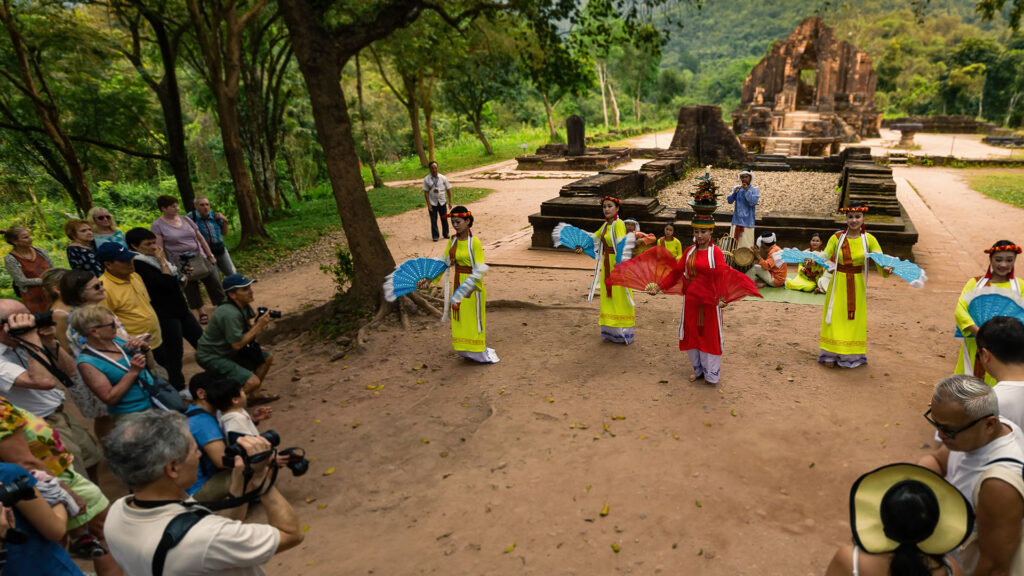
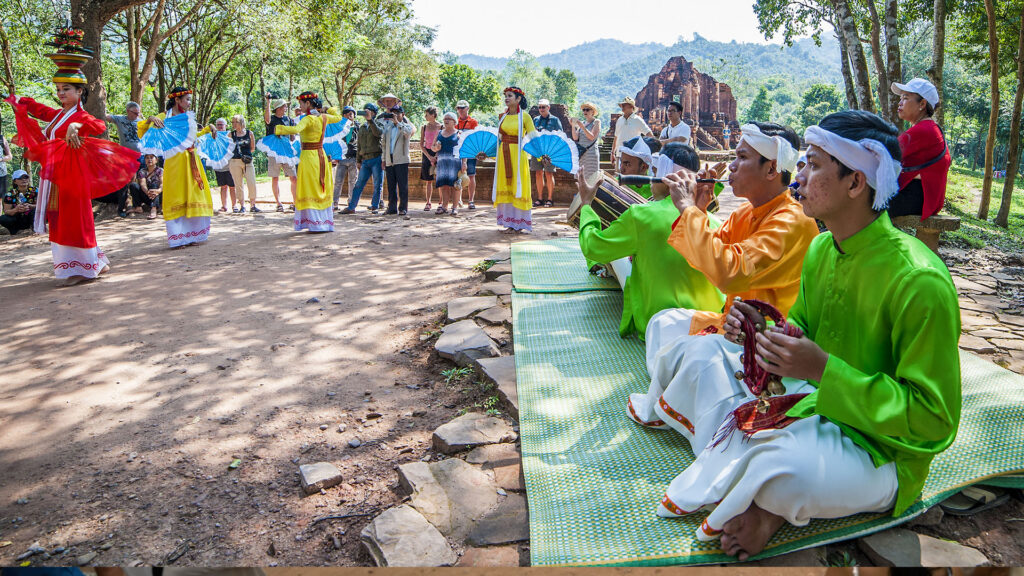
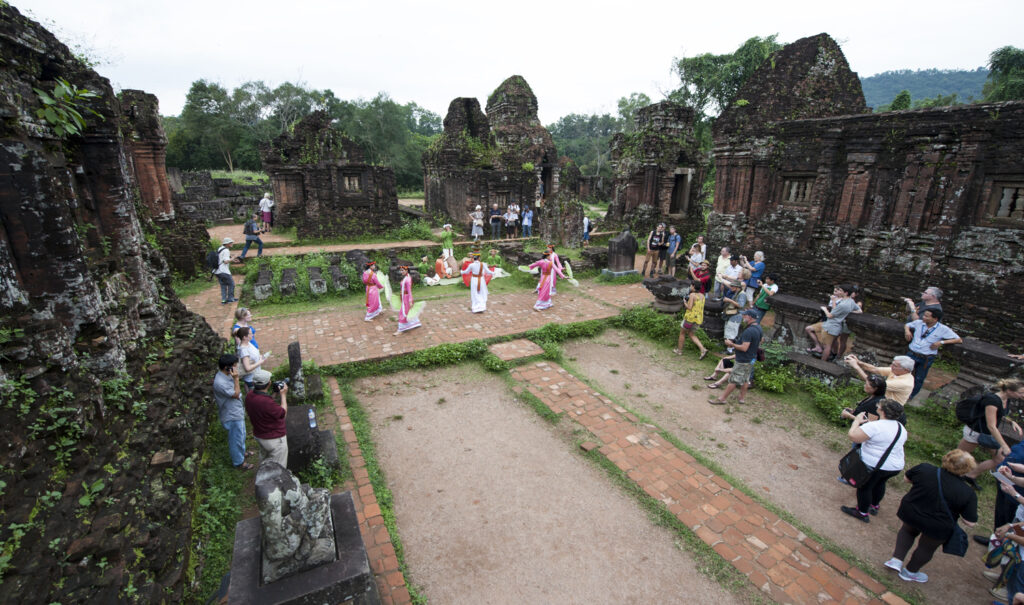
CHAM ART EXPERIENCE AT MY SON SANCTUARY
This intangible cultural activity is vividly recreated at My Son Sanctuary, featuring excerpts from Cham festivals, royal and religious dances that allow visitors to deeply feel the distinctive values of Champa intangible heritage.
Cham art performances are regularly held at the Cham Folk Performing House within the sanctuary and right at the foot of the ancient towers, giving visitors the chance to enjoy the show while embracing the sacred atmosphere of the heritage site. Each day, Cham artisans tell their homeland’s story through every beat and movement, allowing visitors not only to “see” but also to “feel” the living pulse of the Champa civilization.
HIGHLIGHTED PERFORMANCES
Apsara Dance: According to Cham cultural researchers, this dance was originally dedicated to the deities. Apsara dancers seem to come alive from stone sculptures, gracefully portraying divine beauty and femininity. The dance features gentle, flowing movements primarily expressed through hand gestures, each carrying symbolic meaning — such as happiness when the arms are placed across the chest, or the image of the Naga serpent when the left arm extends backward and the right hand curls near the chest with three raised fingers.
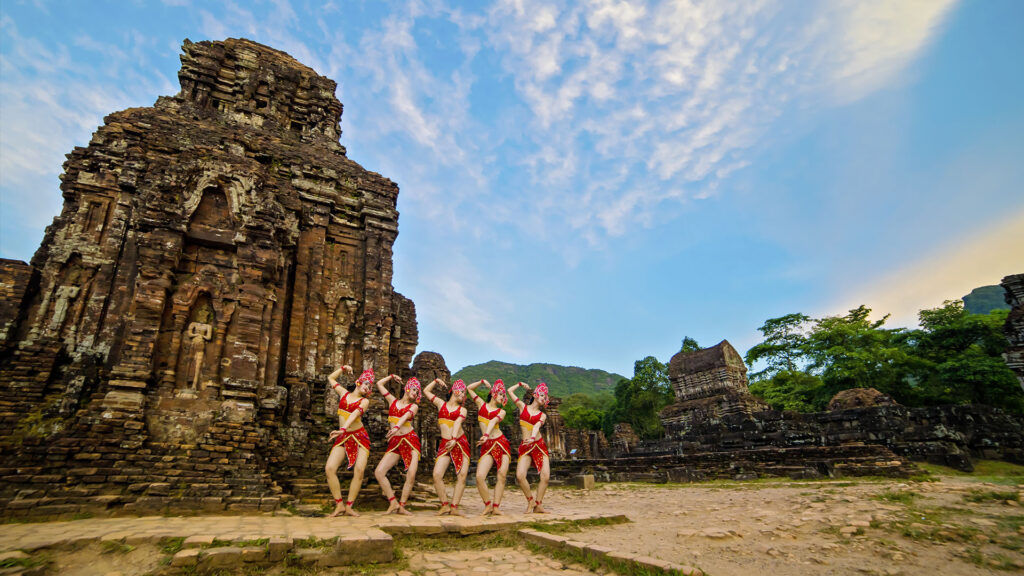
Offering Dance: A sacred ritual dance performed during festivals such as Kate, Rija Nugar, and Rija Praung, typically by young women carrying offerings of fruit, water, or pottery jars on their heads, while holding fans or scarves in soft, reverent motions. At night, lit candles atop the offerings create a mystical, solemn scene.
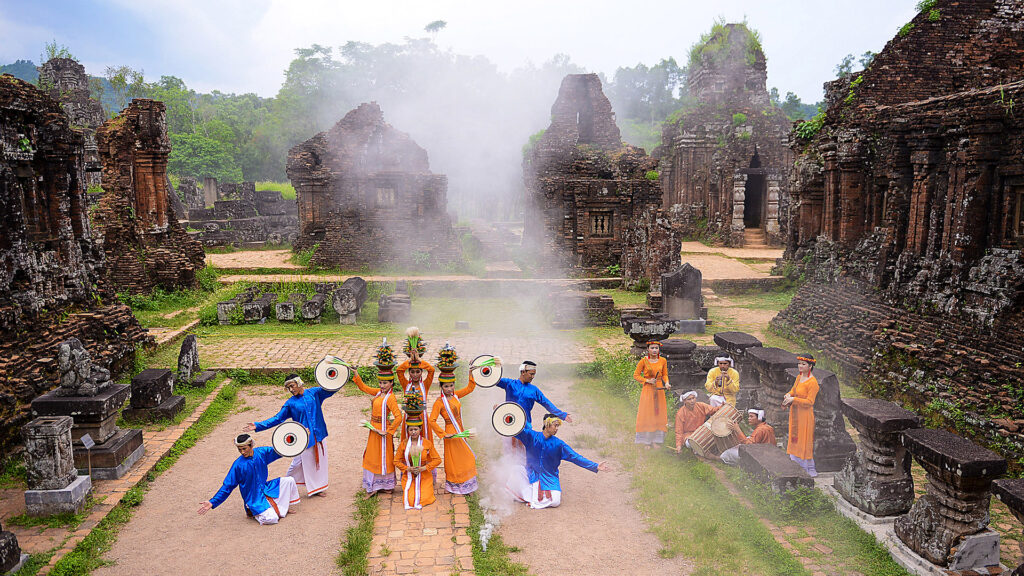
Fan Dance: A long-standing form of folk dance using fans that open and close rhythmically. It can be performed solo or in groups during festivals. Movements range from swift and powerful to slow and graceful, blending fan flicks and steps to the rhythm of traditional music, often stirring the audience into cheerful applause and chants of “ahei!” (hooray).
Water Jar Dance: Originating from Thong Hala (betel tray) dances in sacred water-offering rituals atop the towers, this form evolved by combining ceremonial movements with everyday actions of carrying water jars, creating a unique cultural expression.

Traditional Musical Performances: In addition to the dances, visitors can enjoy the sounds of Paranung drums and Saranai trumpets performed by Cham musicians. Amid the mystical My Son valley, these instruments seem to awaken the ancient reliefs, bringing the thousand-year-old holy city back to life.
Beyond enjoying the performances, visitors can also engage in interactive experiences, such as learning simple Cham dance moves, trying to balance a water jar, wearing Cham costumes, and taking photos with local artists. After the show, a leisurely walk around the towers while listening to guides explain the architecture, beliefs, and stories behind each structure offers both relaxation and profound cultural insight.
VISITOR INFORMATION
Performance Schedule: Daily
– At the Performance House: 9:45 AM, 10:30 AM, 11:15 AM, 3:30 PM
– At the Foot of Tower G: 9:00 AM, 2:45 PM
Entrance Fee to My Son Sanctuary:
– International Visitors: 150,000 VND/person/visit (including admission and services)
– Vietnamese Visitors: 100,000 VND/person/visit (including admission and services)
DANANG TOURISM PROMOTION CENTER